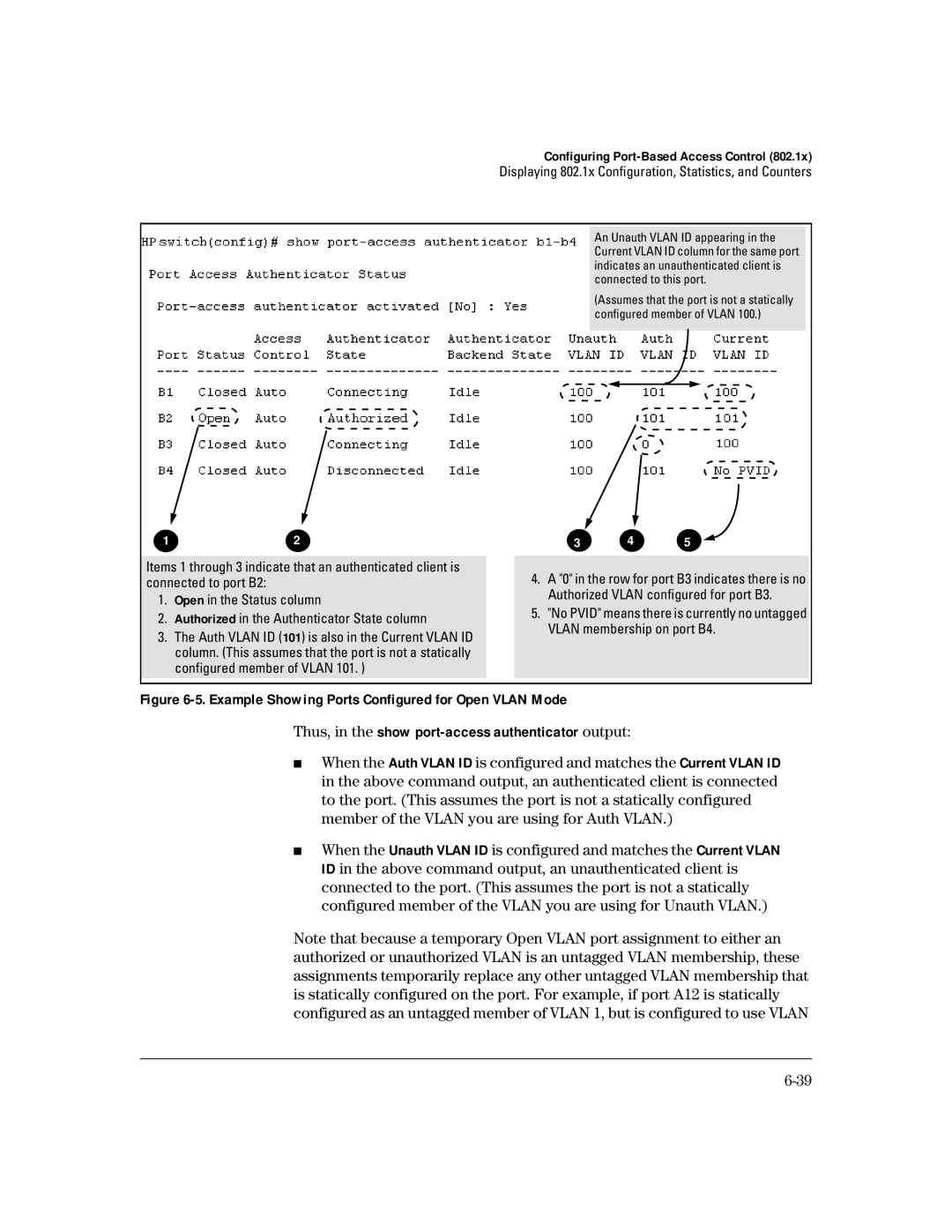
Configuring
An Unauth VLAN ID appearing in the Current VLAN ID column for the same port indicates an unauthenticated client is connected to this port.
(Assumes that the port is not a statically configured member of VLAN 100.)
12
Items 1 through 3 indicate that an authenticated client is connected to port B2:
1.Open in the Status column
2.Authorized in the Authenticator State column
3.The Auth VLAN ID (101) is also in the Current VLAN ID column. (This assumes that the port is not a statically configured member of VLAN 101. )
3 4 5
4.A "0" in the row for port B3 indicates there is no Authorized VLAN configured for port B3.
5."No PVID" means there is currently no untagged VLAN membership on port B4.
Figure 6-5. Example Showing Ports Configured for Open VLAN Mode
Thus, in the show port-access authenticator output:
■When the Auth VLAN ID is configured and matches the Current VLAN ID in the above command output, an authenticated client is connected to the port. (This assumes the port is not a statically configured member of the VLAN you are using for Auth VLAN.)
■When the Unauth VLAN ID is configured and matches the Current VLAN ID in the above command output, an unauthenticated client is connected to the port. (This assumes the port is not a statically configured member of the VLAN you are using for Unauth VLAN.)
Note that because a temporary Open VLAN port assignment to either an authorized or unauthorized VLAN is an untagged VLAN membership, these assignments temporarily replace any other untagged VLAN membership that is statically configured on the port. For example, if port A12 is statically configured as an untagged member of VLAN 1, but is configured to use VLAN
